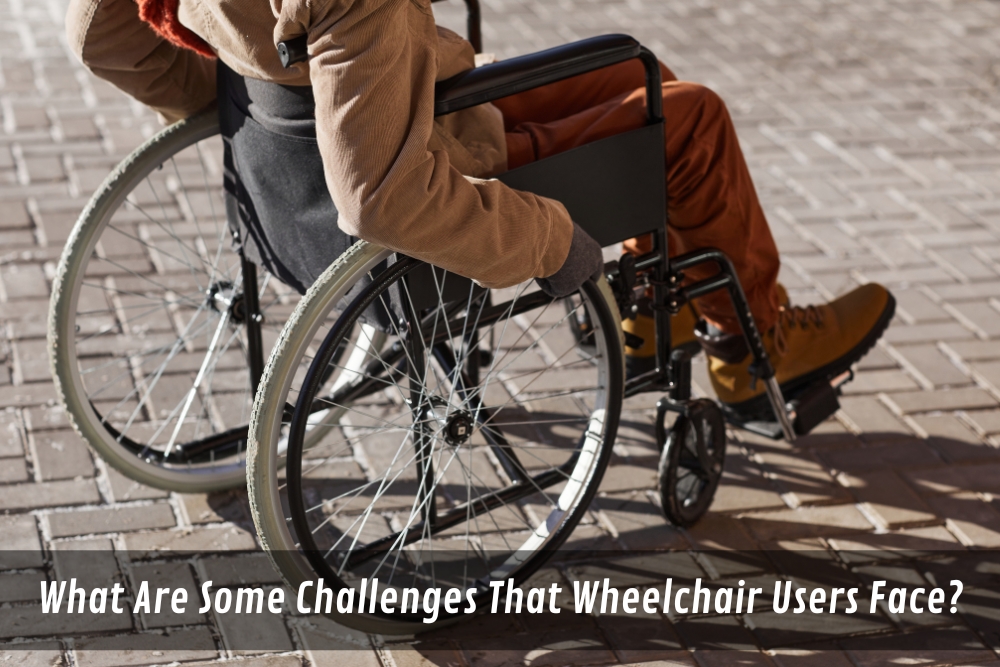The challenges wheelchair users face on a daily basis can be numerous, ranging from physical limitations to environmental barriers. For many individuals, using a wheelchair is essential for mobility, but it can also come with its own unique set of challenges. These challenges can be related to accessibility, social interactions, and even emotional well-being. In this blog, we will discuss some of the most common challenges that wheelchair users face. As well as some potential solutions to these obstacles. By understanding these challenges, we can work towards creating more inclusive and accessible environments for people with disabilities.
What are the types of disabilities that require the use of a wheelchair?
There are several types of disabilities that can require the use of a wheelchair for mobility. Some examples include:
- Muscular dystrophy: A group of inherited disorders that cause progressive muscle weakness and wasting, making it difficult to walk or move without assistance.
- Spinal cord injuries: Damage to the spinal cord can result in paralysis or loss of sensation in the limbs, requiring the use of a wheelchair for mobility.
- Cerebral palsy: A group of neurological disorders that affect movement, coordination, and balance, and can make walking difficult or impossible.
- Multiple sclerosis: A chronic autoimmune disease that affects the central nervous system and can cause a wide range of symptoms, including muscle weakness and difficulty walking.
- Spina bifida: A birth defect that affects the spinal cord and can cause paralysis or weakness in the legs, requiring the use of a wheelchair.
- Amputation: The loss of a limb due to injury or illness can require the use of a wheelchair for mobility.
These are just a few examples of disabilities that can require the use of a wheelchair. The type of wheelchair used may vary depending on the specific needs of the individual, such as a manual wheelchair for those with upper body strength or a power wheelchair for those with limited mobility.
The difficulties that wheelchair users face include:
- One of the biggest challenges wheelchair users face is the lack of accessibility in public places. Many older buildings and homes lack ramps or elevator access, making it difficult for wheelchair users to enter or move around inside. Even if they can access the building, many do not have enough space to maneuver a wheelchair, which can be dangerous and limiting. Additionally, many parking lots are not designed with adequate disabled parking spaces, forcing them to park far away from their intended destination. Wheelchair users may also find it difficult to use public transportation due to a lack of designated wheelchair spaces on buses and trains.
- Another common challenge that wheelchair users face is dealing with dirty hands when using manual wheelchairs. Manual wheelchairs require physical exertion, meaning that after a few hours of use, the user’s hands may become very dirty from contact with the ground. This can be especially difficult for wheelchair users who rely on their hands to do everyday tasks.
- Lastly, disabled people are often made to feel like second-class citizens by those around them who may have difficulty understanding and empathising with their situation. They may experience discrimination or negative attitudes in public places or in the workplace, which can make it even more difficult for them to pursue their goals and lead a fulfilling life.
In summary, wheelchair users face a variety of challenges in their daily life. From lack of access to older buildings and inadequate parking spots to dealing with dirty hands when using manual wheelchairs and facing negative attitudes from others, wheelchair users must overcome a variety of obstacles to lead their lives. However, with increased awareness and understanding of the challenges they face, we can work together to make life easier for those with disabilities.
What are some effective strategies for addressing the challenges that wheelchair users encounter?
- One of the most effective strategies for addressing the challenges that wheelchair users face is to increase public awareness and education about their situation. It is important for people to understand the challenges that wheelchair users experience, such as lack of accessibility in public places and inadequate parking spots, so they can develop empathy and make appropriate accommodations. Additionally, disabled people should be given opportunities to advocate for themselves and explain their needs to those around them without fear of judgment or discrimination.
- We can also create more accessible environments by making changes to physical structures, such as installing ramps and elevators in older buildings or providing more wheelchair-accessible parking spots in public areas. By creating spaces that are more accessible, we can help reduce some of the obstacles that wheelchair users encounter on a daily basis.
Finally, we can create support networks and resources for wheelchair users to help them cope with their everyday challenges. This could include providing counselling services, peer support groups, or disability-specific organisations that offer resources and advice on how to navigate the world in a wheelchair. By offering this type of support to those affected by disabilities, we can help make life easier for them and ensure they feel empowered to pursue their goals.
Conclusion
Overall, wheelchair users face a variety of challenges in their daily life, from lack of accessibility to inadequate wheelchair parking spots and negative attitudes from others. However, by utilising effective strategies such as increasing public awareness and education, creating more accessible environments, and providing support networks and resources, we can work together to make life easier for those with disabilities.
If you’re having difficulty navigating life as a wheelchair user, JB Medical is here to help. We offer a wide range of products and services designed to meet the needs of disabled people and make their lives easier. Speak with us today for more information about how we can help you lead a more independent and fulfilling life.




